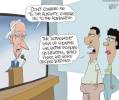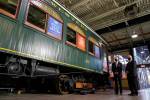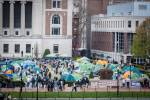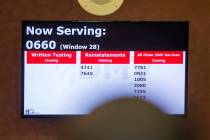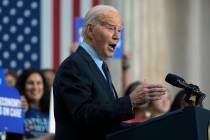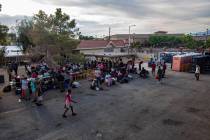Competition is here, whether education reactionaries like it or not
Here in the Southwest, the de facto legal amnesty for waves of non-English-speaking illegal immigrants crowding the public schools has tended to mask a demographic shift that’s grown obvious elsewhere – a drop in the school-age population.
Add to that the growing competition from privately run charter schools, and it should come as no surprise that school districts nationwide closed 1,069 traditional public schools during the 2010-11 school year, according to data compiled for The Wall Street Journal by the National Center for Education Statistics. That was up from 717 closings in 2000-01.
Almost 40 percent of Chicago’s public school teachers, who make about $71,000 to $76,000 for working nine months a year, send their kids to private schools. They went on strike this fall to protest a proposed 16 percent pay increase, but also to fight rumored plans to close 100 under-attended schools.
In Washington, D.C., the public schools have gotten so bad – despite massive infusions of tax money – that enrollment in district-run schools dropped to about 42,000 this year from some 61,000 in 2002, due partly to the city’s dwindling school-age population but also to the growing popularity of charter schools. About 40 percent of D.C. public-school students now attend charters. Another 20,000 D.C. students attend private schools.
Operating underused public schools is costly, and tends to shift a higher percentage of budgets out of the classroom. Davis Elementary, in the District of Columbia’s low-income Southeast, retains only 178 students spread through a 69-year-old building meant to hold 450, and now spends about $13,225 a pupil, with only 32 percent going to classroom teachers, the Journal reports. By comparison, nearby Langdon Elementary, with more than twice as many students and the resultant efficiencies of scale, spends $9,900 a pupil, with 55 percent going to classroom teachers.
Meantime, three miles away, 1,050 children crowd the new, $30 million, privately run KIPP charter school.
A pathetic 34 percent of students at government-run Davis Elementary test proficient in reading, 35 percent in math. That’s actually an improvement over a few years ago. At the privately run KIPP charter school, on the other hand, 59 percent are proficient in reading; 75 percent in math. Maybe that’s why KIPP has a waiting list of 2,000 names.
Teachers unions, predictably, argue the solution is yet more money. But proponents of school choice say closing low-performing and under-enrolled campuses is a natural outgrowth of healthy competition.
Though Nevada lags behind much of the nation in creating a voucher or tax credit system that would open the doors of better-performing private schools to more families of modest means, competition is obviously coming to education, nationwide – as it must come to any industry that charges more and more for its services, while delivering a flawed product and resisting all sensible attempts at objective measurement, accountability, and radical reform.
The time is coming to an end when haughty union educrats can demand, as they have long done in Nevada, “Just give us more money; we’ll take it from there.”



